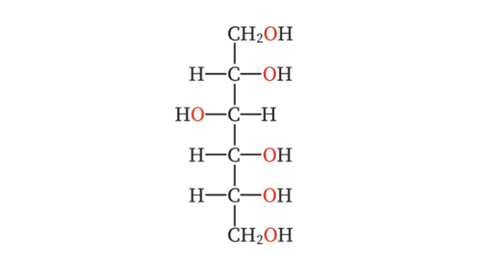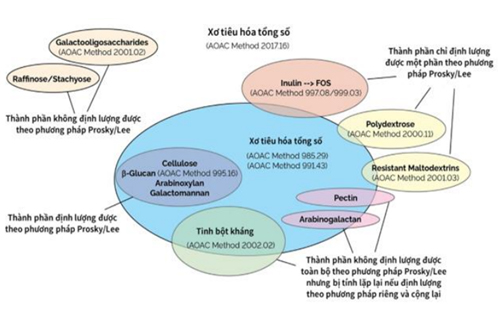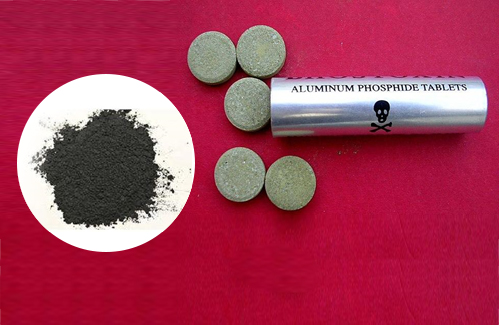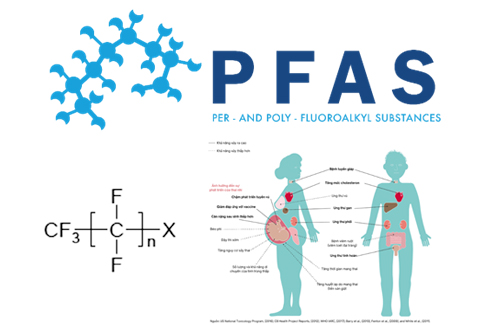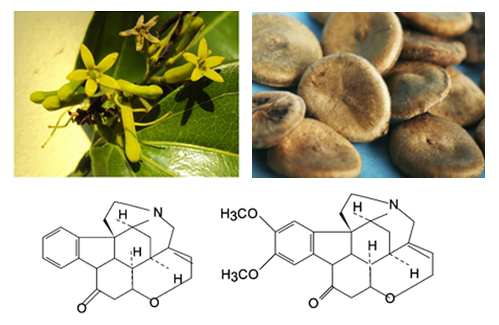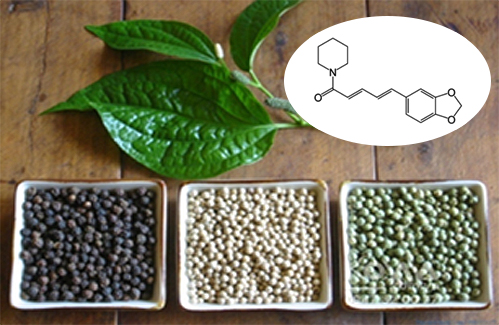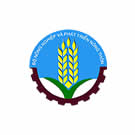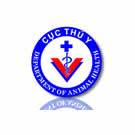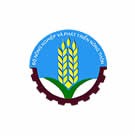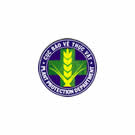- Folder Technical News
- Views 1206
- Last Updated 24/12/2024
Bacillus cereus is a pathogenic bacterium that can lead to foodborne illnesses through the production of various toxins, significantly affecting consumer health. Join the experts from the National Institute for Food Control as we delve into the mechanisms and implications of food poisoning caused by Bacillus cereus in the following article.
What is Bacillus cereus?
Bacillus cereus (B. cereus) is a Gram-positive, motile bacterium capable of forming spores and producing toxins. It thrives well in temperatures ranging from 5°C to 50°C, with an optimal temperature of 35°C to 40°C. B. cereus is commonly found in the environment, such as in soil and water, and its spores have a high adhesion capability, resisting cleaning processes. B. cereus can cause food poisoning through vomiting and diarrhea toxins, although most cases are mild and self-limiting. However, it remains a significant health hazard, especially in the food industry, as poisoning can occur even when food has been reheated.
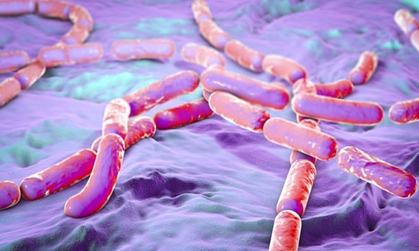
Figure 1: Illustration of Bacillus cereus
Symptoms of food poisoning caused by Bacillus cereus
According to the U.S. Food and Drug Administration (FDA), B. cereus secretes two main types of toxins that cause different types of illnesses.
- Diarrheal toxin: Released by the bacterium in the small intestine, causing abdominal pain, diarrhea, and cramps, but rarely causing vomiting. Symptoms usually appear 6 to 15 hours after consuming contaminated food and gradually decrease after about 1 day.
- Vomiting toxin: Secreted by the bacterium in food, particularly abundant in starchy foods such as rice, potatoes, and fruits. This toxin causes vomiting and nausea, with symptoms occurring 30 minutes to 6 hours after consuming contaminated food. These symptoms also decrease after about 1 day.
Sources of Bacillus cereus infection
B. cereus is a common bacterium found everywhere in the environment. Food poisoning caused by B. cereus is likely to occur when the supply chain is not well controlled – including processing, cooking, storage, transportation, and quality assessment of food before consumption. Foods commonly associated with B. cereus diarrhea-related food poisoning include dairy products, meat, vegetables, spice mixtures, dry products, especially cereal products such as bread, cereals, pizza, rice, etc.
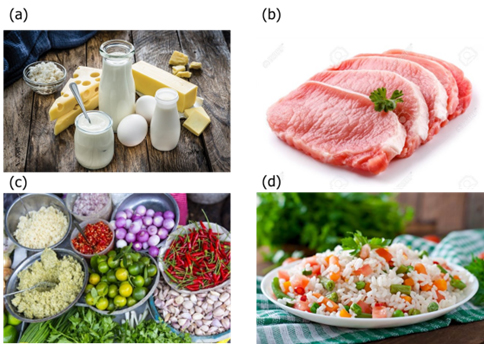
Hình 2. Some foods at risk of Bacillus cereus contamination
(a) Dairy products, (b) Meat, (c) Spice mixtures, (d) Cereal products
How Bacillus cereus spread
B. cereus is a common and opportunistic pathogenic bacterium, easily found in various foods and dishes. Under unfavorable conditions such as dryness and heat during food processing or storage, B. cereus can survive in spore form.
The spores of this bacterium resist many sanitation methods such as heat, irradiation, ultrasound, ion solutions, ozone, and decontamination chemicals, and they can also withstand low pH. Spores are only destroyed when subjected to moist heat at 121°C for 15 minutes or dried at 160°C for 1 hour. Conventional cooking methods are often not effective enough to eliminate B. cereus spores.
After cooking, if the dish is left to cool for several hours before consumption, the spores can reactivate and grow. At this point, B. cereus faces little competition from other bacteria, as those bacteria have been killed during the previous cooking process.
Situation of Bacillus cereus foodborne outbreaks globally
From 2010 to 2020, a total of 419 outbreaks caused by B. cereus were reported in China, resulting in 7,892 illnesses, 2,786 hospitalizations, and 5 deaths. In the United States, B. cereus is estimated to cause about 0.7% of foodborne illnesses among the 31 main pathogens. According to the U.S. Food and Drug Administration, there are approximately 63,400 illnesses caused by this bacterium each year. From 2005 to 2007, there were 13 confirmed outbreaks and 37.6 suspected outbreaks affecting over 1,000 people. Although everyone is at risk of B. cereus infection, the mortality rate associated with this illness is very rare.
In Canada, 2006 saw over 36,000 cases of food poisoning due to B. cereus. This bacterium was also considered a major cause of foodborne illness in the Netherlands in 2006, accounting for 5.4% of outbreaks, and in Norway in 2000, it caused 32% of foodborne outbreaks.
Situation of Bacillus cereus foodborne outbreaks in Vietnam
B. cereus has caused many serious outbreaks of food poisoning worldwide, and Vietnam is no exception. In 2020, a major outbreak occurred in Da Nang when food from a vegetarian establishment was contaminated with E. coli, Staphylococcus aureus, and B. cereus, leading to 230 cases of poisoning. Previously, dozens of preschool children in Can Tho were hospitalized after consuming pho and yogurt contaminated with B. cereus.
In 2022, the Pasteur Institute in Nha Trang tested 8 food samples at Ischool Nha Trang, where an outbreak caused over 600 students to be hospitalized, including one fatality. Results showed the presence of Salmonella, B. cereus, and E. coli in fried chicken samples, along with B. cereus in fish sauce samples.
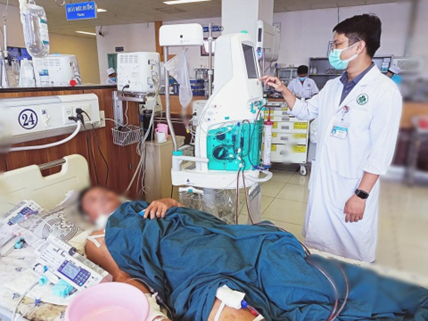
Figure 3. Bacillus cereus Food Poisoning: Unforeseen Complications
Diagnosis of Bacillus cereus poisoning
According to the National Institutes of Health (NIH) in the U.S., food poisoning caused by B. cereus can be diagnosed by testing the patient's vomit for the pathogenic bacteria, then matching the isolated strains from the sample with the contaminated food source or known pathogenic strains. Additionally, the CDC states that food poisoning due to B. cereus can be confirmed by isolating the bacterium from food samples, feces, or vomit. There are various media for culturing this pathogen. Commercial kits are also available to detect diarrhea toxins, but not for the vomiting toxin.
Preventing Bacillus cereus food poisoning
Here are some recommendations to prevent food poisoning:
- Keep food at appropriate temperatures, hot above 60°C and cold below 4°C.
- Reheat or freeze any food left at room temperature for more than 2 hours.
- Heat food above 74°C for at least 15 seconds before consumption.
- Carefully select and wash ingredients for cold dishes and fermented foods.
- When a contamination incident occurs, clean and disinfect the kitchen and cooking utensils.
- Maintain cleanliness in food preparation areas and storage utensils to limit the presence and growth of bacteria.
- If food is suspected to be contaminated, it should be discarded immediately and should not be consumed.
Testing methods for Bacillus cereus
There are various methods used to analyze B. cereus, with traditional culture methods being one of the common techniques. B. cereus is quantified using colony counting techniques at 30°C, according to the standard TCVN 4992:2005 (ISO 7932:2004). Additionally, molecular biology methods such as PCR (Polymerase Chain Reaction) and Real-time PCR are also used to analyze B. cereus. In combined analytical methods, B. cereus samples are cultured on agar plates, identified using the Malditof (Matrix-Assisted Laser Desorption/Ionization Time-of-Flight) method, and analyzed for 16S gene sequencing.
The National Institute for Food Control regularly conducts testing activities for B. cereus, with leading food testing capabilities in Vietnam. The laboratory, equipped with modern facilities and a team of experienced professionals, is committed to providing the best food testing services to its customers with principles of honesty, dedication, accuracy, efficiency, and reputation.
Author: Phạm Ngọc Hà
References
[1] “Epidemiologic Notes and Reports Bacillus cereus Food Poisoning Associated with Fried Rice at Two Child Day Care Centers -- Virginia, 1993.” Accessed: Sep. 21, 2024. [Online]. Available: https://www.cdc.gov/mmwr/preview/mmwrhtml/00025744.htm
[2] “Bacillus cereus.” Accessed: Sep. 21, 2024. [Online]. Available: http://www.bccdc.ca/health-info/diseases-conditions/bacillus-cereus
[3] “From soil to gut: Bacillus cereus and its food poisoning toxins | FEMS Microbiology Reviews | Oxford Academic.” Accessed: Sep. 19, 2024. [Online]. Available: https://academic.oup.com/femsre/article/32/4/579/1813157?





